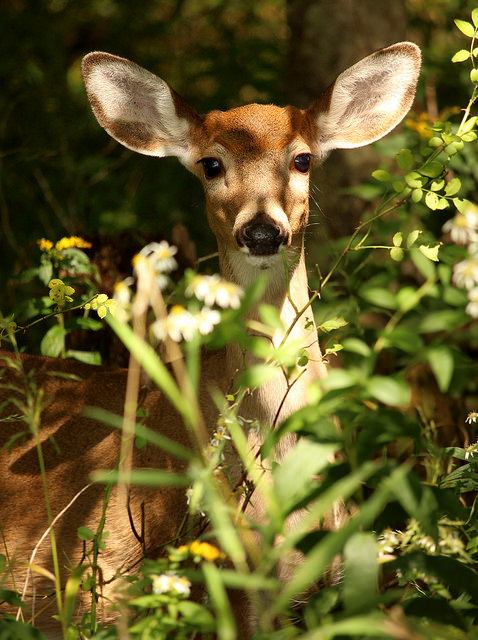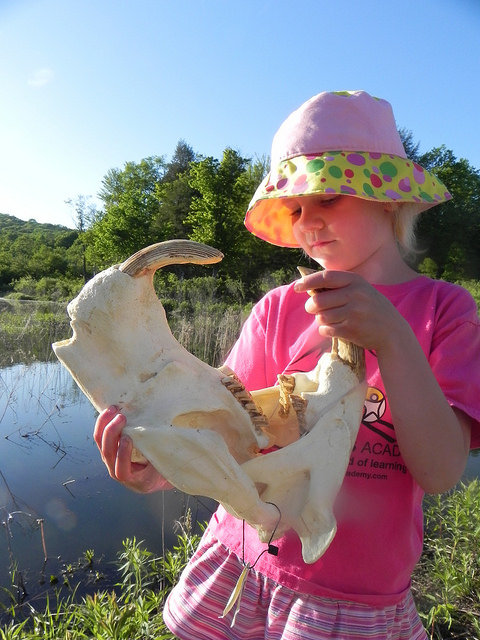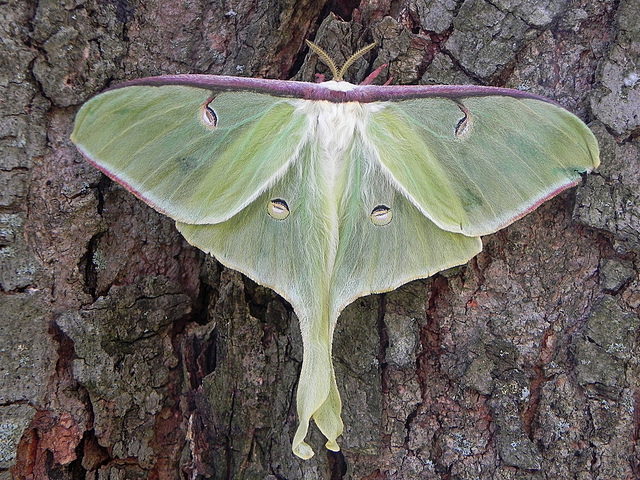Teaching in a school yard the other day, a third grade boy pointed at the ground and shouted “There’s a deer track!” Another girl thought it was a rabbit track. To prove their points, they simply talked louder. Obviously, if you can talk louder than the other person, that makes you correct.
“How do you know what kind of track it is?” I asked. This made them look a little closer. The young man who thought it was a deer track said “Because it is,” with the certainty that comes from experience. The young lady who thought it might be a rabbit said it was a rabbit because there were two little tracks that looked like tiny bunny feet.

Photo by Jeff Tome. Deer tracks are one of the most common to find and the easiest to identify, but many people can’t remember how they learned what one looked like.
It was a classic deer track, but it was hard for the young man to say why. It simply was a deer track. He had gone hunting with his dad, gone out looking for shed antlers, and been in the woods his whole life. A deer track was something so basic, that he had learned so long ago, that he could no longer explain why it was from a deer.
I pulled out a card of animal tracks and we sat down and looked at them and came up with the reasons why it was a deer: two toes in a half moon shape, about an inch and a half long. The group agreed that it was from a deer and we moved on to other things.
Where does knowledge come from, and how does it lodge in your brain to be pulled out at the right moment? Sometime, so long ago that I can’t recall, someone showed me how to identify a deer track. I don’t think twice about it. There is other information lodged in my brain that has been there since I was a kid: how to identify a robin or cardinal, what a dandelion looks like, and how to use a buttercup to see if someone likes butter.
It’s so easy to lodge things in the mind of a child. Children come to programs knowing that dragonflies will sew their lips shut, white froth in the grass is frog spit and, of course, that buttercups tell whether people like butter. Sometimes I think that we fill children’s heads so full of stories that they miss out on learning a lot of things.
Like most adults, there are things lodged in my head that have been there for decades. Some are true. Some are probably based on things that others told me, or that I read online and are totally false. Some moments are unforgettable and will never be forgotten.
One of those moments is my first Luna Moth. I was at the Allegany Nature Pilgrimage in Allegany State Park several years ago. This event brings hundreds of people together to learn about nature from a variety of naturalists each year on the weekend after Memorial Day. They set up a tent in the park that can seat a couple of hundred people.

Photo by Jeff Tome. The Allegany Pilgimage in Allegany State Park on June 2-4 is a great place to show kids new things and get them excited about being outside.
In that tent, at least 15 years ago, there was a Luna Moth. It was an elegant and large lime green blob set against the white of the tent. In the best spirit of the nature pilgrimage, there was a moth expert that hung out underneath the moth and helped people understand more about the moth.
I learned more from hanging out with one moth lover than from a book. He told me about how the moth had no stomach and no mouth, that it lived as an adult only to mate and die, that it was a type of silk moth, and that they were a rare sighting. It is a moment that I won’t forget and an insect that has become a hard to erase part in the white squiggles of my brain.
The Allegany Nature Pilgrimage will be held this year on June 2-4, 2017 in Allegany State Park’s Camp Allegany. This is an event I have gone to each year for over twenty years and is now a family tradition. Each year, there is something new to learn from somebody who knows things that I don’t. Each year, my children get exposed to new things, as well as people who are passionate about sharing nature with children and getting them excited to be outdoor explorers. This year marks the 59th year that the pilgrimage has taken place, put together in coordination with Audubon chapters in Buffalo, Erie, Rochester and Jamestown and pooling talent from all of those places.
Audubon Community Nature Center builds and nurtures connections between people and nature. You can learn more about the Allegany Nature Pilgrimage at alleganynaturepilgrimage.com or find a link from the Audubon Community Nature Center website, auduboncnc.org. Audubon is located at 1600 Riverside Road, just off of Route 62 between Jamestown and Warren.
Jeff Tome is a naturalist at Audubon.


Recent Comments